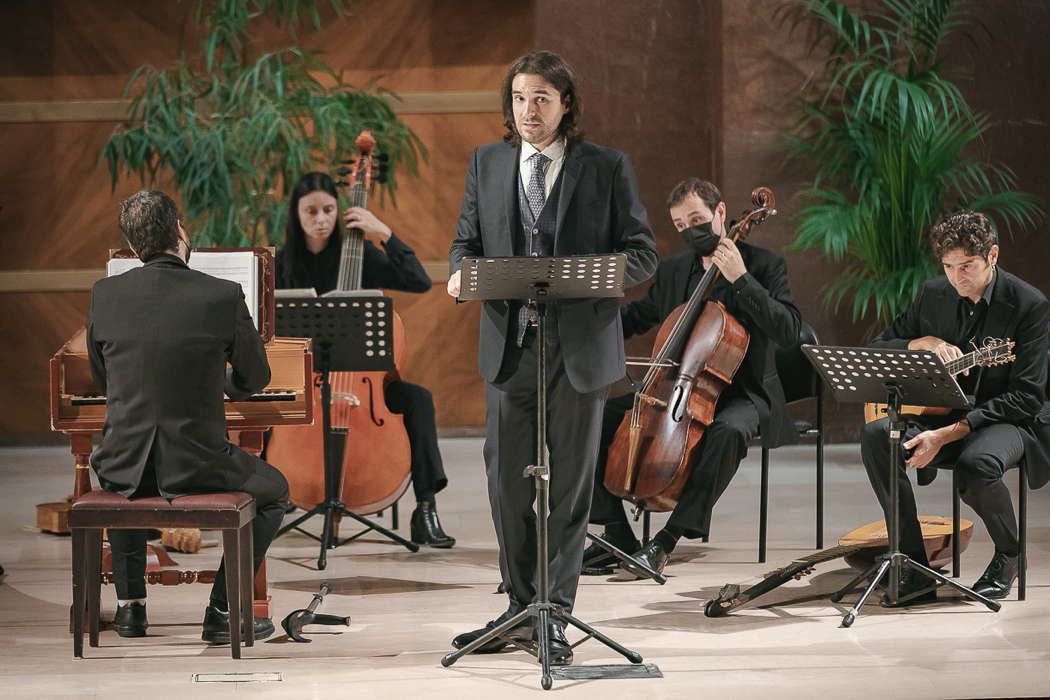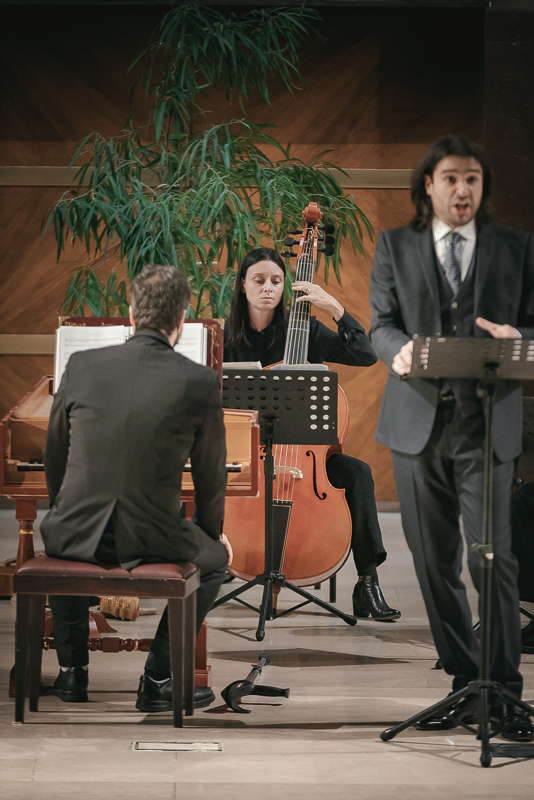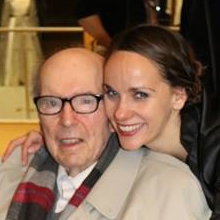 WORD SEARCH: Can you solve Allan Rae's classical music word search puzzles? We're currently publishing one per month.
WORD SEARCH: Can you solve Allan Rae's classical music word search puzzles? We're currently publishing one per month.
Not Just a Recital
GIUSEPPE PENNISI reviews a concert in Rome dealing with contrasted passions of love
Sì dolce è il tormento, The title of the concert heard at the Istituzione Universitaria dei Concerti (IUC) in Rome on 9 October 2021 is eloquent: it deals with contrasted passions of love. Read by Carlo Vistoli through recitatives and arias of the predominantly Venetian Baroque. Young countertenor Carlo Vistoli, born in 1987, boasts a good international career and a rich discography. We have already talked about him in this magazine in 2019 reviewing Gluck's Orfeo e Euridice in the production of the Teatro dell'Opera di Roma, and of two French theaters, the Théâtre des Champs Elysées, and that of the Château de Versailles.

Carlo Vistoli (centre) with Sezione Aurea and Filippo Pantieri performing in Rome. Photo © 2021 Federico Priori and Andrea Caramelli
What is a countertenor? In early medieval polyphony, the contratenor was a part added to the tenor, deriving its meaning from the Latin contra. Around the middle of the fifteenth century, with the spread of polyphonic writing for four voices, the contratenor was located higher (contratenor altus), or lower (contratenor bassus) than the tenor, but still lower than the discantus. Today's alto, as well as the bass, derive the etymology of the term from this ancient practice. The term countertenor is commonly used nowadays to indicate male performers who sing in the alto register. The term is, more properly, contraltists. Countertenor (translating the Latin contra in counter) are the contralto man, following the spread of the British performers of which Alfred Deller was the leading exponent, establishing himself as a model internationally from the second half of the twentieth century. Benjamin Britten made use of countertenors: think of Gloriana, an opera composed on the occasion of the coronation of Elizabeth II Queen of England, Scotland and Wales.
The concert on 9 October was not just a recital by Vistoli. Sezione Aurea accompanied the singing. This is a baroque music ensemble led by Filippo Panteri (harpsichord) and including two violins (Gabriele Raspanti, Francesco Camagni), a theorbo (Simone Vallerotonda), a cello (Sebastiano Severi) and a violone (Rosita Ippolito). It was, in fact, a preview of a new CD soon to be released.
The concert, and the CD, contain music of the Venetian Baroque. For non-specialists, a clarification is useful. In Venice, the Baroque had its own particular connotations because the theatres were private and exempted from the control of the Inquisition: it was possible, therefore, to deal with both political and sensual (or even explicitly sexual) themes that elsewhere the Inquisition did not allow to be addressed. Think of works such as Monteverdi's L'Incorazione di Poppea or Cavalli's La Calisto which will soon be at La Scala. And a prince of the forum like Barrister Giovanni Francesco Busenello could write librettos against the 'established powers'.
Carlo Vistoli sang recitatives and arias by Monteverdi, Cavalli, Laurenzi and Ferrari, playing the role of abandoned lovers - quite a lot of vocalizing. With a high register that can rise to very high peaks and then descend to pianissimi and half voices, he bewitched the audience and at the same time offers an interesting sample of the specifications of the countertenor in the Venetian Baroque. Sezione Aurea accompanied him with sweetness, playing with instruments as close as possible to those of the late sixteenth century. Between the first and second part he played the sensual symphony of La Callisto by Cavalli.

Carlo Vistoli (right) with Sezione Aurea and Filippo Pantieri. Photo © 2021 Federico Priori and Andrea Caramelli
There was much applause and many requests for encore, to which Vistoli responded with a tribute to Rome: an aria by Girolamo Frescobaldi who, born in Ferrara, worked for a long time in the city of the Popes and is considered an exponent of the Roman Baroque. And with as a 'goodbye': a ciaccona by Monteverdi.
Copyright © 12 October 2021
Giuseppe Pennisi,
Rome, Italy




